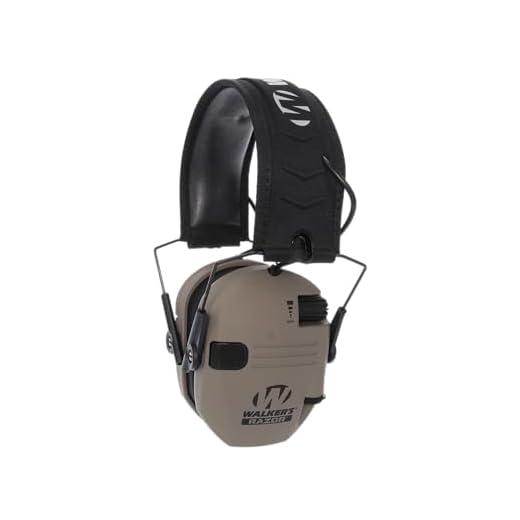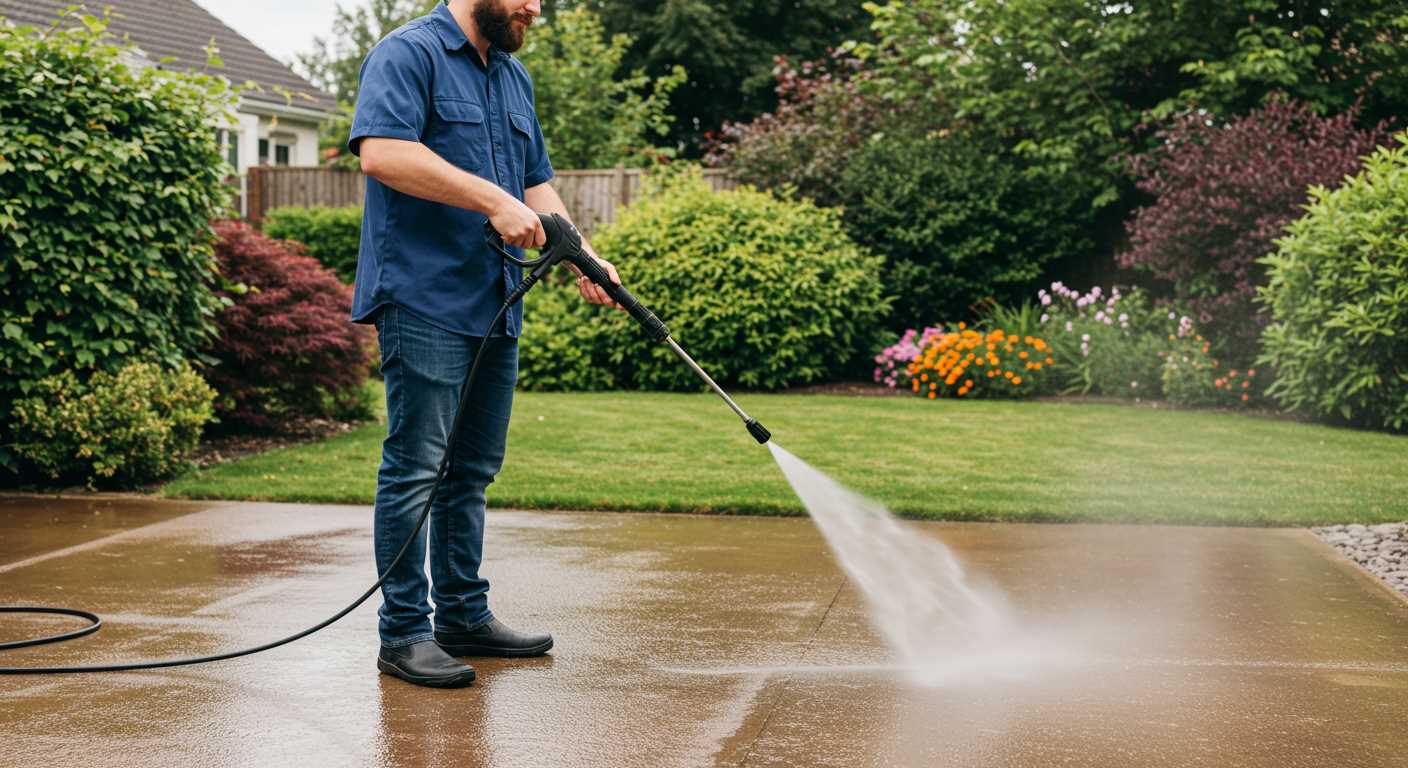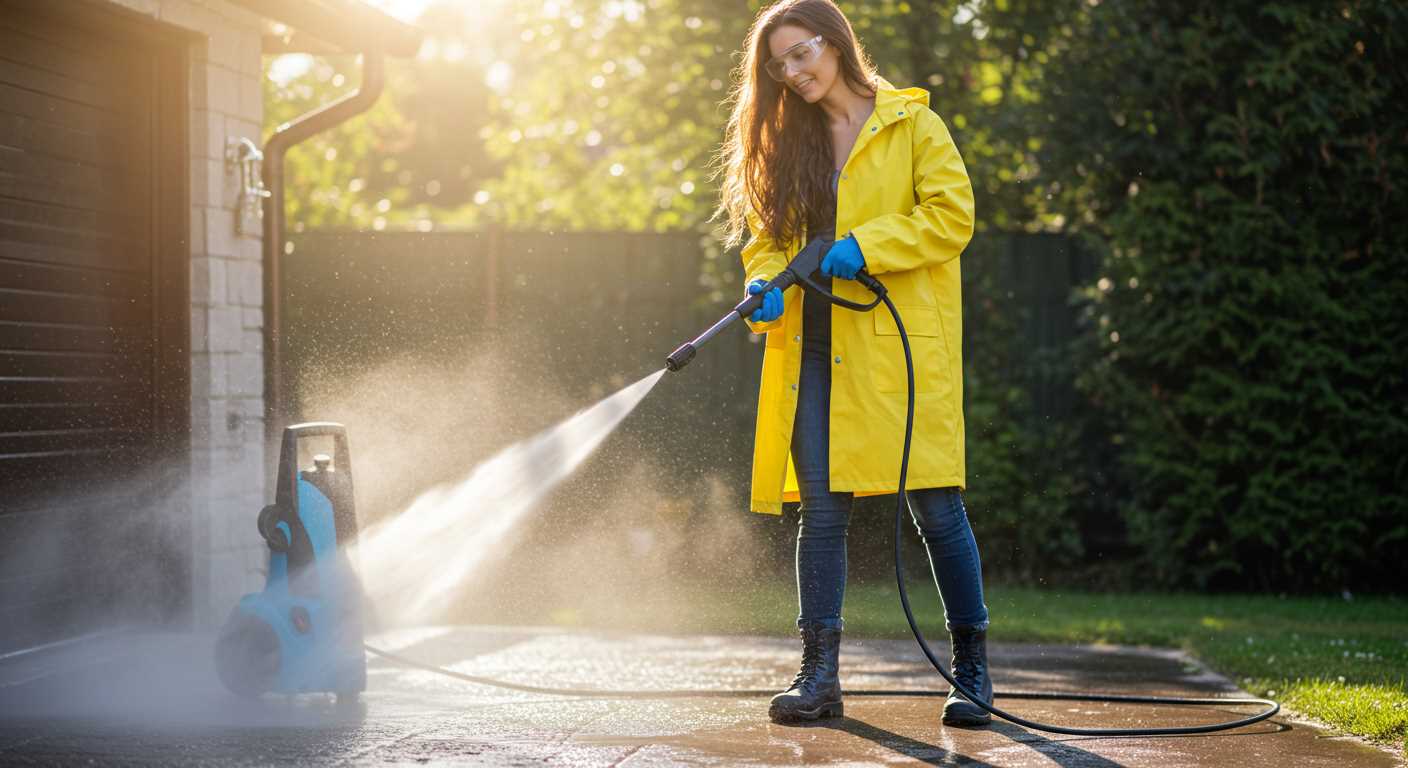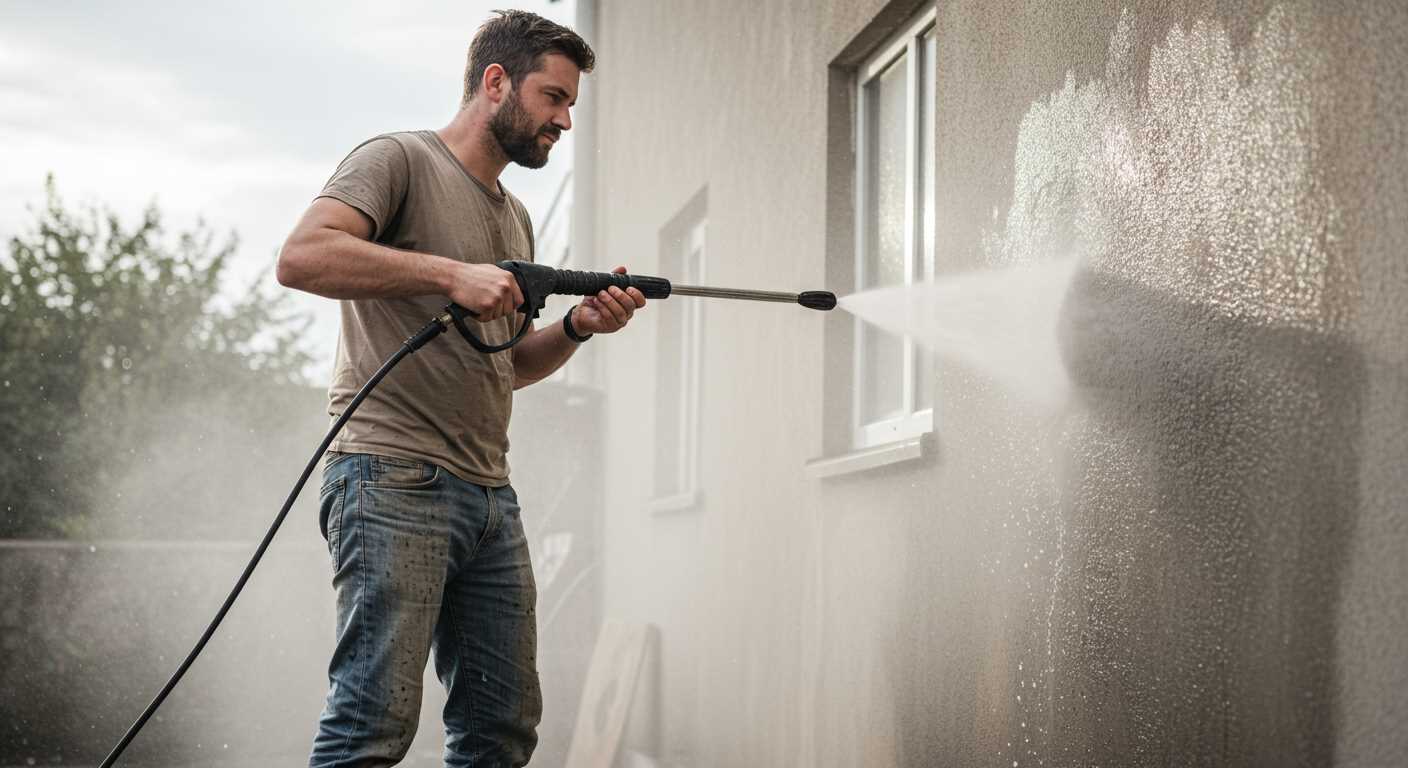



High-pressure cleaning devices pose a significant risk of injury if misused. These machines are designed to eliminate dirt and grime with immense force, and as such, they can inflict damage on skin and soft tissues. It’s essential to handle these tools with caution and to never operate them without proper training and protective gear.
Maintaining a safe distance from the nozzle when using these machines is paramount. A direct jet of water at high velocity can penetrate the skin, potentially leading to serious injuries. Always assess the settings before operating and consider the pressure level appropriate for the task. As an expert in this field, I’ve seen firsthand the consequences of neglecting safety protocols.
Personal protective equipment such as gloves, goggles, and long sleeves is crucial. Implementing these safety measures can significantly reduce the risk of harm. After a decade of experience testing various models, I can confidently state that understanding the potential hazards associated with these cleaning units is not just advisable but necessary for safe operation.
Can High-Pressure Cleaning Devices Harm Skin?
Direct contact with a high-pressure stream can lead to severe injury. The velocity of the fluid is what primarily causes damage, not just the pressure itself. A stream directed at skin can penetrate and even puncture, creating serious wounds.
Recommended Safety Practices
Always wear protective gear, including gloves and sturdy footwear, when operating these machines. I advise using goggles or face shields to protect your eyes from debris and the force of the spray. Maintain a safe distance from surfaces; even at low settings, the risk still exists.
Understanding the Risks
Even the most well-designed cleaning devices have inherent risks. Users must be aware that sprays from nozzles, particularly at higher settings, can cause lacerations or abrasions. Being cautious around loose clothing and areas with high water concentration is crucial. If someone inadvertently points the nozzle toward themselves or others, the consequences could be severe.
Learning about the proper operation of these tools significantly reduces the chances of accidents. Familiarising oneself with the user manual and following the manufacturer’s guidelines is indispensable for safe usage.
Understanding Pressure Washer PSI Levels

For safety and efficiency, it’s vital to recognise PSI (pounds per square inch) levels in these machines. Higher PSI correlates with increased power. Units between 1,200 to 1,500 PSI serve well for delicate tasks, like washing cars or cleaning patio furniture. For moderate surfaces such as wood decks or fences, 1,500 to 2,500 PSI is more appropriate. Surfaces needing more intensive cleaning, like concrete driveways or brick, often require equipment rated at 3,000 PSI or above.
When operating high PSI models, protective gear is indispensable due to the potential for injury. Even at lower levels, misuse can result in unexpected harm. Consequently, always maintain a safe distance from the surface being cleaned, adjusting the nozzle as required to manage pressure impact.
Selecting the correct PSI is crucial. Using too high a level can compromise material integrity, while too low may fail to deliver satisfactory results. Always refer to manufacturer guidelines for each specific task, ensuring that the power aligns with the intended application. Proper knowledge of PSI levels directly influences both safety and effectiveness in cleaning operations.
Risks of High Pressure on Skin
Direct exposure to a concentrated jet from high-power cleaning devices can lead to severe injuries on the skin. The force of the stream is capable of penetrating the dermal layers, causing lacerations and abrasions that may require medical attention. I have seen firsthand the consequences of neglecting proper safety measures while operating these machines.
Injury Types and Severity

When it comes to injuries from high-velocity streams, the risk increases significantly with higher pressure settings. Common injuries include:
| Injury Type | Description | Severity |
|---|---|---|
| Abrasions | Surface-level damage resulting from contact with the jet. | Moderate |
| Lacerations | Deeper cuts that may require stitches. | Severe |
| Soft Tissue Injuries | Damage to underlying muscles or tissues. | Critical |
| Infections | Possible after deep cuts due to bacterial entry. | Variable |
Prevention and Safety Measures
To mitigate risks, always wear personal protective equipment such as gloves, goggles, and protective clothing. Maintain a safe distance while operating these machines, ensuring that the nozzle is not aimed at any body parts. Moreover, understanding the operating manual and adhering to safety recommendations is essential for preventing accidents.
Signs of Injury from High-Pressure Water Equipment

Immediate attention is paramount if you observe any of the following symptoms after exposure to high-velocity water: redness, swelling, or sudden pain in the affected area. These indicate potential damage to the skin. Look for cuts that may not initially bleed but present as puncture wounds; these are often deceptive.
Increased sensitivity, numbness, or a tingling sensation are telltale signs of nerve impact. If the injured area feels unusually cool or you notice any bruising, seeking medical advice is advisable. Prolonged exposure might lead to deeper tissue injuries, which could escalate without timely intervention.
Monitor for symptoms of infection, such as discharge, persistent pain, or fever. These can arise from wounds that seem minor but may have been compromised. Keeping the area clean and bandaged is crucial in preventing complications.
Listen to your body. If you feel uncertain about the severity of an injury, professional guidance is wise. Early assessment can make a significant difference in the healing process.
Protective Gear for Pressure Washing
Wearing appropriate safety equipment is crucial for anyone operating high-pressure cleaning equipment. Start with safety goggles to protect your eyes from flying debris and chemicals. They should fit snugly to prevent any particles from entering from the sides.
Next, ensure you have a pair of heavy-duty gloves. These should be waterproof, providing a barrier against both water and harmful substances. Consider reinforced gloves that can withstand abrasions and cuts during use. Steel-toe boots are also advisable; they guard your feet from heavy objects and provide a non-slip surface while working.
Clothing Choices
Opt for long sleeves and long pants made of durable fabric to minimise skin exposure. Choose materials that are water-resistant and can protect against the force of water blasts. Avoid loose clothing, which can get caught in machinery. Additionally, ensure that your clothing is not made from flammable materials, especially if working with solvents or chemicals.
Hearing Protection
If operating equipment with high noise levels, use hearing protectors like earmuffs or earplugs. Prolonged exposure to loud noises can cause hearing loss, so taking this precaution will safeguard your auditory health.
These recommendations significantly lower the risk of injuries while enhancing comfort and safety during operations. Always assess the work environment for additional hazards, and equip yourself accordingly. Prioritise your safety.
First Aid for Pressure Washer Injuries
Immediately stop any operation upon sustaining an injury. Assess the extent of the damage before taking the next steps.
If the skin has been punctured or lacerated, rinse the area with clean water for at least 15 minutes. Remove any foreign objects carefully without causing further harm.
Apply a sterile dressing or clean cloth to control bleeding. If bleeding is significant and does not stop with pressure, seek medical attention immediately.
For minor abrasions, gently clean the surface with soap and water. After drying, apply an antiseptic ointment and cover with a bandage to prevent infection.
Observe for signs of infection over the following days, such as increasing redness, swelling, or pus formation. If any of these symptoms occur, consult a healthcare professional.
In cases of impact to deeper tissues or if water pressure has caused more severe injury, seek medical evaluation without delay. Internal damage may require professional intervention.
Furthermore, ensure that any enhanced discomfort, numbness, or other unusual symptoms are communicated to a medical professional, as these could indicate more serious complications.
Documentation of the incident, including photographs of the injuries, can be beneficial if further medical care is necessary.
Comparing Pressure Cleaners and Traditional Cutting Tools
When assessing the suitability of machines for tasks typically reserved for saws or knives, it’s essential to understand the distinct functionalities and outcomes they offer. Both categories can achieve impressive results, but their applications vastly differ.
Traditional cutting instruments provide precision and are often used for materials requiring clean edges, such as wood, metal, or plastic. The user has significant control over depth and angle, allowing for detailed work. In particular:
- Tools like chisels and utility knives excel in controlled environments.
- Powered saws are effective for larger projects, with adjustable settings for various thicknesses.
- Specific hand tools ensure safety and reliability for intricate designs.
On the flip side, high-pressure equipment utilises water jets to remove unwanted substances or debris. While effective for cleaning, these tools can inadvertently cause damage if misused, primarily due to the force involved. Key points include:
- High-pressure jets are not designed for honing edges or slices but for loosening grime and stripping away layers from surfaces.
- Always operate with caution, as the impact can lead to injury or destruction of materials if not held correctly.
- It’s more suited for large-scale cleaning tasks rather than delicate work.
In practical terms, selecting between these two types boils down to the nature of the job at hand. For landscaping or cleaning, the jet can accomplish significant results efficiently, whereas for craftsmanship and precision tasks, traditional tools are the way to go.
Discussions about effectiveness should also explore how best to mitigate risks associated with either method. Protective measures should always accompany high-force activities, regardless of whether one is operating a modern cleaner or wielding a cutting apparatus.
Ultimately, the choice hinges on task requirements and the desired outcome, recognising that while both can perform specific functions, their methodologies vastly differ.
Safe Practices Around High-Pressure Cleaning Equipment
Always maintain a safe distance from the nozzle when operating high-pressure cleaning tools. A minimum of 10 feet is advisable to prevent serious injuries.
Prioritise protective gear to shield against potential hazards:
- Industrial-grade safety goggles to guard your eyes from debris.
- Heavy-duty gloves to prevent hand injuries.
- Long-sleeve clothing made of durable fabric to protect your skin.
- Steel-toed boots for foot safety against falling objects.
Test functionality in a controlled environment before full operation. Ensure all connections are secure and conduct a pressure test. Start with the nozzle pointed away from the body to avoid sudden spray.
Be vigilant about the surroundings. Remove any objects or obstacles that could pose risks. Make sure no individuals or animals are nearby during use.
Practice proper operational techniques:
- Use both hands to maintain control of the device.
- Engage the trigger slowly to avoid jarring movements.
- Avoid aiming at yourself or others, even from a distance.
- Always stand in a stable position to prevent slips or falls.
Turn off and depressurise the equipment when switching nozzles or taking a break. This ensures no accidental spraying occurs during adjustments.
Lastly, educate all users about the risks associated with misuse. Proper training significantly reduces the likelihood of accidents.







